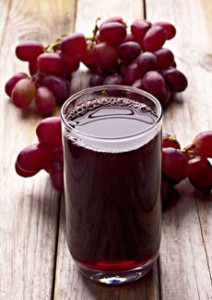FOOD FUN: How To Turn Prohibition Grape Juice Into Wine
|
December 5th is Repeal Day, commemorating the repeal of America’s disastrous era of Prohibition. The 18th Amendment to the U.S. Constitution, prohibiting the manufacture, sale, importation or transportation of alcoholic beverages, went into effect on January 17, 1920. It ended 13 long years later, on December 5, 1933, when the 21st Amendment repealed the 18th Amendment. Prohibition was a sorry time in U.S. History. It enabled the growth of organized crime caused blindness and deaths from bathtub gin. For a complete explanation of Prohibition, visit History.com. There were two small exceptions to the sale or production of alcohol, such as sacramental wine allowed for religious purposes. To get farmers’ support for Prohibition, a clause was put into the Volstead Act: Section 29 enabled people to make 200 gallons (the equivalent of about 1,000 750 ml bottles of wine) of “non-intoxicating cider and fruit juice,” to be made each year at home for family use consumption. (This statute is still on the books.) Bootleggers typically didn’t bother with wine because there was far more profit in liquor. But shrewd grape growers seized upon Section 29 to enable more people to have wine. Farmers produced grape concentrates, sometimes called wine bricks, and sold them with a warning label: “After dissolving the brick in a gallon of water, do not place the liquid in a jug away in the cupboard for twenty days, because then it would turn into wine.” There was also the helpful advice, “To prevent fermentation, add 1/10% Benzoate of Soda.” As we’d say today: LOL! This loophole led California grape growers to increase their land under cultivation by about 700% during the first five years of Prohibition. Many people satisfied their need for alcohol with homemade wine—or a rustic approximation of it.
[3] An ad for wine bricks, offering eight varieties of wine grapes (read more at VinePair.com). |
 [1] Anyone who wanted a glass of wine during Prohibition had to use the loophole and buy a wine brick (next photo—this photo courtesy Plume | DC).
|
|
|
|
||

